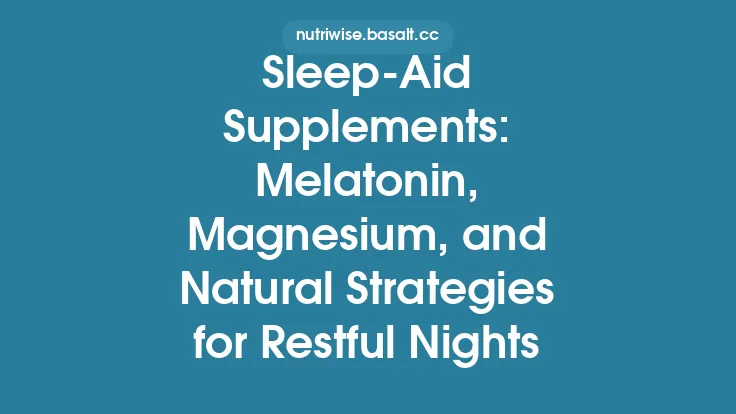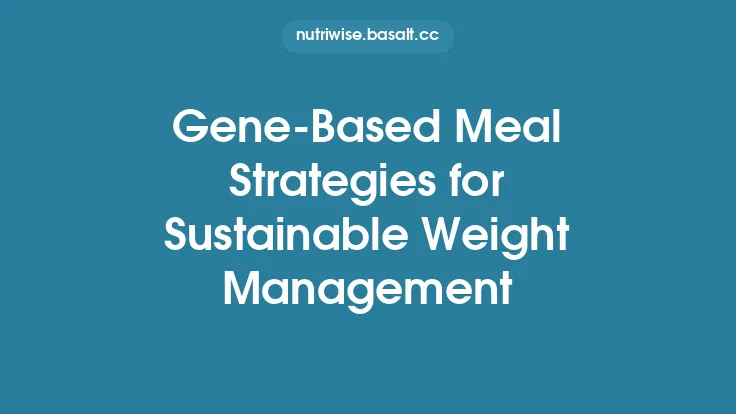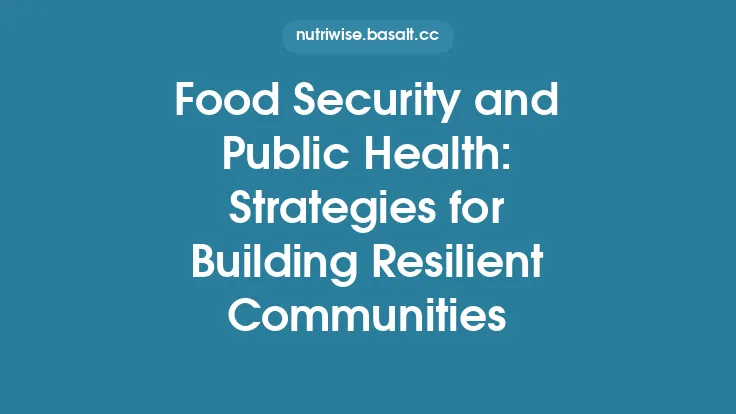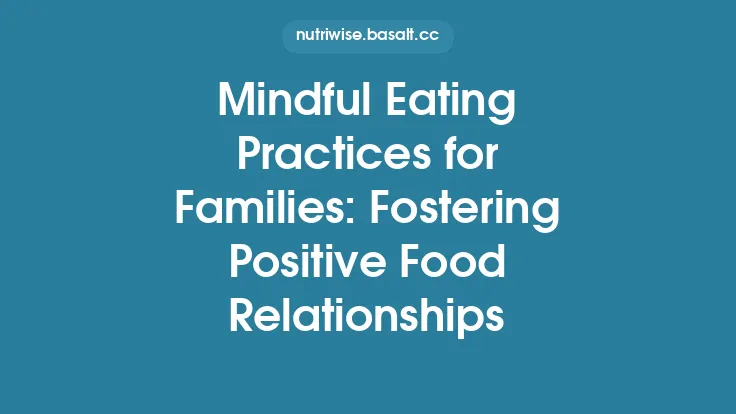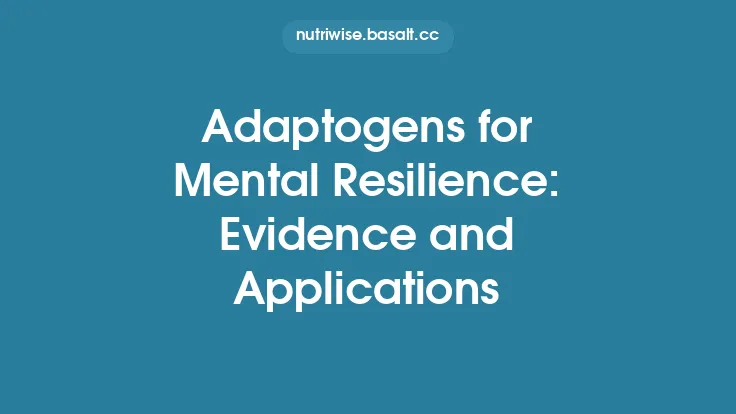Diet‑related anxiety is a common, yet often under‑recognized, barrier that prevents many people from engaging with new eating patterns or sticking to a dietary plan they believe will improve their health. The worry can manifest as a persistent “what‑if” narrative—what if I’m missing essential nutrients? what if the diet will trigger a health problem? what if I’ll fail and feel guilty? This type of anxiety is distinct from general stress or emotional eating; it is specifically tied to the act of choosing, preparing, and consuming food within the framework of a diet. Below, we explore evidence‑based behavioral strategies that help individuals confront and diminish this anxiety, allowing them to make informed food choices without the paralytic fear that often accompanies diet trends.
Understanding the Roots of Diet‑Related Anxiety
- Health‑Related Uncertainty – New diets frequently introduce unfamiliar macronutrient ratios, portion sizes, or food groups. The lack of personal experience creates a perception of risk, which the brain interprets as a threat.
- Perfectionism and Fear of Failure – Many adopters set rigid standards (“I must never deviate”) and view any deviation as a catastrophic failure, amplifying anxiety.
- Physiological Sensitization – Repeated exposure to stress hormones (cortisol, adrenaline) during periods of dietary restriction can condition the body to associate food decisions with a stress response.
- Information Overload – The modern media environment bombards individuals with conflicting nutritional advice, leading to analysis paralysis and heightened worry.
Understanding these mechanisms is the first step toward selecting the most appropriate behavioral interventions.
Identifying Personal Triggers
A systematic approach to pinpointing anxiety triggers can be achieved through a brief self‑audit:
| Situation | Emotional Reaction | Physical Sensation | Thought Pattern |
|---|---|---|---|
| Grocery shopping in the “organic” aisle | Tightness in chest | Rapid heartbeat | “If I don’t buy the right brand, I’ll sabotage my diet.” |
| Eating a meal prepared by a friend | Nausea | Stomach churn | “I’m not following the plan; I’ll lose progress.” |
| Seeing a social media post about a new diet | Restlessness | Muscle tension | “Everyone is doing it; I’m missing out.” |
Documenting these episodes over a two‑week period provides a data set that can be used to target interventions precisely where they are needed most.
Behavioral Activation and Routine Building
Why it works: Behavioral activation (BA) is a core component of cognitive‑behavioral therapy that encourages engagement in rewarding activities to counteract avoidance behaviors. In the context of diet‑related anxiety, BA helps break the cycle of avoidance (e.g., skipping meals, refusing to shop) by establishing predictable, low‑stress eating routines.
Practical steps:
- Schedule Fixed Meal Times – Choose three anchor points (e.g., 8 am breakfast, 1 pm lunch, 7 pm dinner) and commit to them for at least two weeks. Consistency reduces uncertainty and creates a sense of control.
- Incorporate “Micro‑Rewards” – Pair each meal with a brief, enjoyable activity (e.g., a 5‑minute walk, a favorite podcast). The positive reinforcement strengthens the habit loop.
- Gradual Expansion – Once the core meals feel automatic, add a snack or a new food item in a controlled manner, maintaining the same routine structure.
Exposure and Desensitization Techniques
Exposure therapy, traditionally used for phobias, can be adapted to reduce diet‑related anxiety by systematically confronting feared foods or situations.
Step‑by‑step protocol:
- Create a Hierarchy – List foods or scenarios from least to most anxiety‑provoking (e.g., “cooked quinoa” → “raw kale salad” → “high‑fat cheese platter”).
- Start Low – Consume the least threatening item in a safe environment (e.g., at home, alone). Record the anxiety rating (0–100) before, during, and after consumption.
- Repeat Until Habituation – Continue exposure until the anxiety rating drops by at least 30% across three consecutive trials.
- Progress Up the Hierarchy – Move to the next item only after habituation is achieved.
- Incorporate Contextual Variability – Once a food is tolerated at home, repeat the exposure in a different setting (e.g., at a restaurant) to generalize the desensitization.
Research shows that repeated, controlled exposure reduces the amygdala’s threat response, leading to lasting reductions in anxiety.
Cognitive‑Behavioral Tools for Anxiety Reduction
While the focus here is on behavioral strategies, integrating brief cognitive techniques can amplify results.
- Thought Records – Use a structured worksheet to capture the automatic thought (“I’ll ruin my diet”), evidence for and against it, and a balanced alternative (“One deviation does not erase progress”).
- Decatastrophizing – Ask, “What is the worst realistic outcome? How would I cope with it?” This reframes catastrophic predictions into manageable scenarios.
- Socratic Questioning – Challenge the validity of diet‑related rules (“Must I eat exactly 30 g of protein at every meal?”) by probing the source and necessity of the rule.
These tools are most effective when practiced for 5–10 minutes after each eating episode.
Mind‑Body Practices: Breathing, Relaxation, and Grounding
Physiological arousal fuels anxiety. Simple, evidence‑based mind‑body techniques can be employed before, during, and after meals.
- Box Breathing (4‑4‑4‑4) – Inhale for 4 seconds, hold for 4, exhale for 4, hold for 4. Perform three cycles before starting a meal to lower heart rate.
- Progressive Muscle Relaxation (PMR) – Systematically tense and release muscle groups, focusing on the abdomen and jaw, which often tighten during food‑related stress.
- 5‑4‑3‑2‑1 Grounding – Identify five things you see, four you can touch, three you hear, two you smell, and one you taste. This anchors attention to the present moment, reducing rumination.
Regular practice (once daily) has been shown to decrease cortisol levels and improve subjective anxiety scores.
Structured Meal Planning and Predictability
A well‑crafted meal plan reduces decision fatigue and the “analysis paralysis” that fuels anxiety.
- Batch Cooking – Prepare a base of protein (e.g., baked chicken breast) and a set of vegetables (e.g., roasted broccoli, carrots) that can be mixed and matched throughout the week.
- Template System – Use a simple matrix:
- Protein (choose 1 of 3)
- Vegetable (choose 1 of 3)
- Carbohydrate (choose 1 of 2)
This yields 18 possible meals, offering variety without overwhelming choice.
- Visual Meal Calendar – Populate a weekly calendar with the planned meals, using color‑coding for protein, veg, and carb. Visual cues reinforce predictability and reduce the need for on‑the‑spot decisions.
Implementation Intentions: “If‑Then” Planning
Implementation intentions are specific, pre‑planned responses that link a situational cue to a goal‑directed behavior.
Example format:
- *If I feel anxious about eating a high‑fat food at a social gathering, then* I will take three deep breaths, sip water, and remind myself that one meal does not define my overall pattern.
Research indicates that forming these “if‑then” statements increases the likelihood of executing the desired behavior by up to 30%, especially under stress.
Monitoring Progress and Adaptive Feedback
Objective tracking helps demystify the diet process and provides data for adjustment.
- Anxiety Rating Scale – Rate anxiety (0–100) before each meal. Plot trends weekly to identify patterns.
- Food‑Anxiety Log – Combine a standard food diary with anxiety ratings, noting contextual factors (time of day, social setting).
- Feedback Loop – Review the log every Sunday. Celebrate days with low anxiety, and identify modifiable triggers for higher‑anxiety days. Adjust the exposure hierarchy or meal plan accordingly.
The act of quantifying anxiety transforms an abstract feeling into a manageable variable.
Seeking Professional Guidance
When anxiety persists despite self‑help strategies, professional support can be pivotal.
- Registered Dietitian (RD) – An RD can clarify nutritional misconceptions, tailor meal plans to individual health needs, and provide evidence‑based reassurance.
- Licensed Therapist (CBT/ACT) – Therapists trained in cognitive‑behavioral or acceptance‑commitment approaches can address deeper fear structures and teach advanced coping skills.
- Integrated Care – Some health centers offer combined nutrition‑psychology services, ensuring that dietary advice and anxiety management are coordinated.
Referral is especially recommended if anxiety interferes with daily functioning, leads to avoidance of meals, or triggers physiological symptoms (e.g., palpitations, gastrointestinal distress).
Integrating Physical Activity for Anxiety Management
Exercise exerts anxiolytic effects through endorphin release, improved sleep, and enhanced neuroplasticity.
- Low‑Intensity Cardio – 20‑minute brisk walks after meals can aid digestion and lower post‑prandial anxiety.
- Resistance Training – Two sessions per week improve body confidence, indirectly reducing fear of “diet failure.”
- Mindful Movement – Yoga or tai chi incorporates breath control and body awareness, reinforcing the mind‑body connection cultivated in relaxation practices.
Aim for at least 150 minutes of moderate activity per week, adjusting intensity based on personal fitness level.
Creating a Supportive Physical Environment
The immediate environment can either trigger or soothe anxiety.
- Food Visibility – Keep staple, nutrient‑dense foods (e.g., nuts, pre‑cut veggies) in plain sight; store “trigger” items out of immediate reach or in opaque containers.
- Dedicated Eating Space – Designate a specific area for meals, free from screens and work materials, to signal the brain that it is a safe, focused eating zone.
- Cue Reduction – Turn off push notifications from diet‑related apps during meals to prevent intrusive thoughts about “tracking” that can heighten anxiety.
Environmental structuring reduces the cognitive load associated with food decisions.
Long‑Term Maintenance and Relapse Prevention
Even after anxiety subsides, vigilance is necessary to prevent recurrence.
- Scheduled “Check‑Ins” – Every month, review the anxiety log and adjust the exposure hierarchy if new foods or situations have emerged.
- Booster Sessions – Brief (15‑minute) refresher practices of breathing, PMR, or implementation intentions can be scheduled after holidays or travel periods, which often re‑introduce uncertainty.
- Flexible Goal Setting – Shift from rigid “must‑do” rules to “guideline” approaches (e.g., “aim for 70% of meals to follow the plan”) to accommodate life’s variability without triggering anxiety.
- Self‑Compassion Practice – Regularly engage in self‑compassion exercises (e.g., repeating “I’m doing the best I can” during moments of perceived failure) to buffer against self‑criticism that fuels anxiety.
By embedding these maintenance habits, individuals can sustain a calm, confident relationship with food, even as diet trends evolve.
In summary, diet‑related anxiety is a multifaceted challenge that can be effectively managed through a suite of behavioral strategies: establishing predictable routines, systematic exposure, implementation intentions, mind‑body relaxation, structured planning, and ongoing monitoring. When combined with professional guidance and a supportive environment, these techniques empower individuals to navigate dietary choices with reduced fear, fostering both psychological well‑being and nutritional health.

